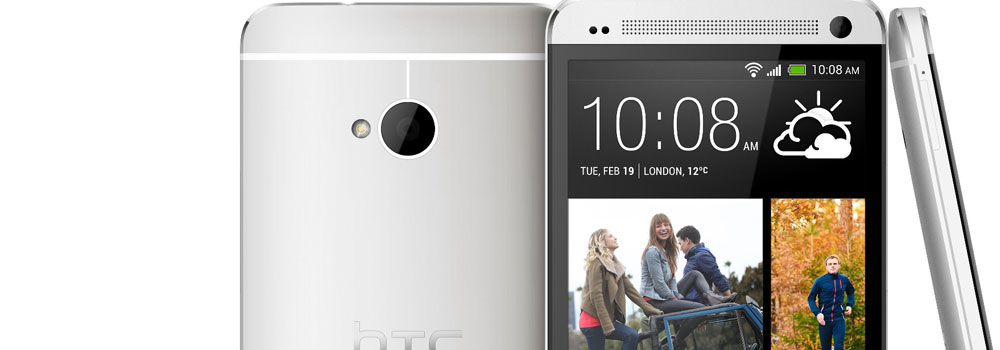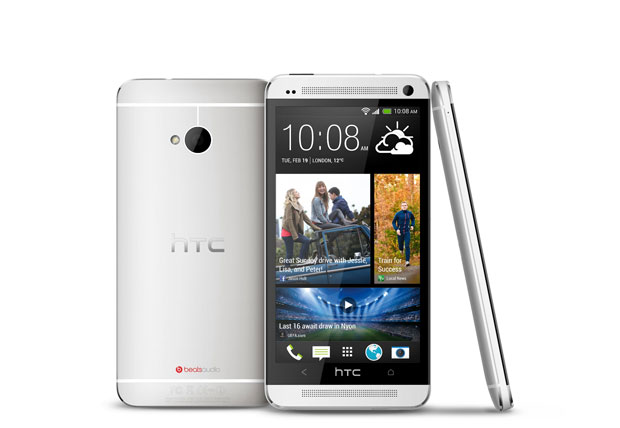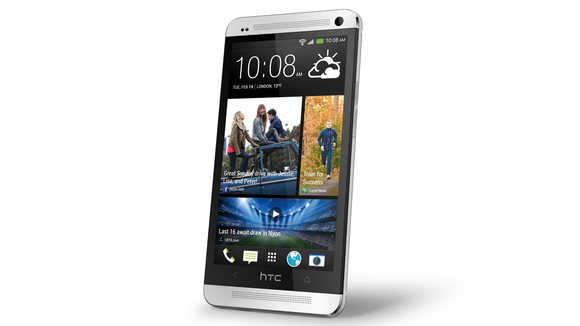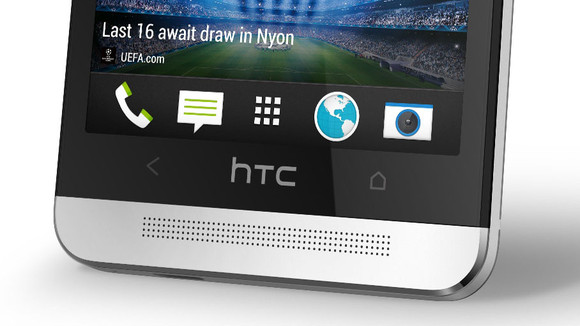
difficult radical measures and HTC opted for some bold decisions into the making of the new smartphone, HTC One.
 A quick briefing on what the ONE is all about.
A quick briefing on what the ONE is all about.
HTC One features a 4.7 inch display 1080 pixel Super LCD 3 display with an eye-popping 468 dpi and protected by Gorilla Glass 2. An aluminum unibody wraps the premium device and is powered by Qualcomm’s quad-core Snapdragon 600, clocked here at 1.7GHz and paired with 2GB RAM and flavoured by Android 4.1.2 Jelly Bean which is give a zen treatment by new Sense 5.Sounds enticing? Read on.
Hardware
HTC One looks stunning would be an understatement. The aluminum dressing given makes all the differences. Chucking the polycarbonate body (plastic is plastic, any day right? polycarbonate or otherwise) HTC has gone for a superior premium fashion dressing, an aluminum unibody design. Weighing 143 grams and measuring 5.4 (137.4mm) x 2.7 (68.2mm) x 0.37 (9.3mm) inches, I would bet it to be a show-stopper. In a true craftsmanship indicator it is said it takes 200 minutes to machine one shell and the resultant block of aluminium unibody with white polycarbonate injects and glass slab on top is one masterpiece. Sure, HTC is betting on buckets on its Android smartphone future on this One device. On the front you have two aluminum bands on top and bottom of the 4.7 inch Gorilla glass 2 that features a 1080 pixel (468 dpi) Super LCD 3 display. Look at the image closely, you would find identical perforations on both top and bottom. Yes, HTC One features stereo speakers, each with a dedicated proprietary amp design that minimizes distortion and maximizes volume.
On the front you have two aluminum bands on top and bottom of the 4.7 inch Gorilla glass 2 that features a 1080 pixel (468 dpi) Super LCD 3 display. Look at the image closely, you would find identical perforations on both top and bottom. Yes, HTC One features stereo speakers, each with a dedicated proprietary amp design that minimizes distortion and maximizes volume.
 On the bottom you see a prominent HTC logo and two capacitive buttons. Yes, you read it right. Just two instead of the usual three. back on the left and home on the right. Long pressing the home brings the google now and double tapping shows the recent apps. HTC’s new found love for Zen. More of it you will find out further.
There also rests a 2.1 megapixel front-facing camera capable of recording 1080p video on the top right.
The back of ONE has a nice accent and plastered with HTC and beats logo but the most important feature over here is the rear camera that HTC calls as Ultrapixel camera and a single LED flash. After Nokia’s PureView technology, HTC’s Ultrapixel camera might be the most industry-talked feature in that unlike PureView’s monster 41 pixel number, here HTC’s Ultrapixel camera packs a 4 MP camera. Yes, you read it right again. When other manufacturers are racing for cramming more mega pixels to their inventory of thin smartphones, HTC’s 4 mega pixel ultrapixel camera might be hard fact to digest but HTC promises its technology would deliver better results than the higher pixel cameras. Ok, am sure it is going to confuse consumers with this radical approach and might have to invest pretty lot in ‘educating’ the people that bigger the pixel is not always better quality.
The trick here is a very large sensor capable of gathering 330% more light mated with a 28mm f/2.0 autofocus lens and with the help of HTC’s Imagechip 2 promises a better quality of pictures. Ok, allow us to digest the fact a bit and come up with a detailed post on HTC’s Ultrapixel camera shortly. The bottom line you would be interested is don’t under-estimate the 4 mega pixel, HTC promises to deliver more and better than the current rivals with 8 MP and 13 MP shooters. And then there is Zoe share feature bundled in camera app, we will talk about it further down in software part.
On the bottom you see a prominent HTC logo and two capacitive buttons. Yes, you read it right. Just two instead of the usual three. back on the left and home on the right. Long pressing the home brings the google now and double tapping shows the recent apps. HTC’s new found love for Zen. More of it you will find out further.
There also rests a 2.1 megapixel front-facing camera capable of recording 1080p video on the top right.
The back of ONE has a nice accent and plastered with HTC and beats logo but the most important feature over here is the rear camera that HTC calls as Ultrapixel camera and a single LED flash. After Nokia’s PureView technology, HTC’s Ultrapixel camera might be the most industry-talked feature in that unlike PureView’s monster 41 pixel number, here HTC’s Ultrapixel camera packs a 4 MP camera. Yes, you read it right again. When other manufacturers are racing for cramming more mega pixels to their inventory of thin smartphones, HTC’s 4 mega pixel ultrapixel camera might be hard fact to digest but HTC promises its technology would deliver better results than the higher pixel cameras. Ok, am sure it is going to confuse consumers with this radical approach and might have to invest pretty lot in ‘educating’ the people that bigger the pixel is not always better quality.
The trick here is a very large sensor capable of gathering 330% more light mated with a 28mm f/2.0 autofocus lens and with the help of HTC’s Imagechip 2 promises a better quality of pictures. Ok, allow us to digest the fact a bit and come up with a detailed post on HTC’s Ultrapixel camera shortly. The bottom line you would be interested is don’t under-estimate the 4 mega pixel, HTC promises to deliver more and better than the current rivals with 8 MP and 13 MP shooters. And then there is Zoe share feature bundled in camera app, we will talk about it further down in software part.


The HTC One is a fabulous phone for Android fans.